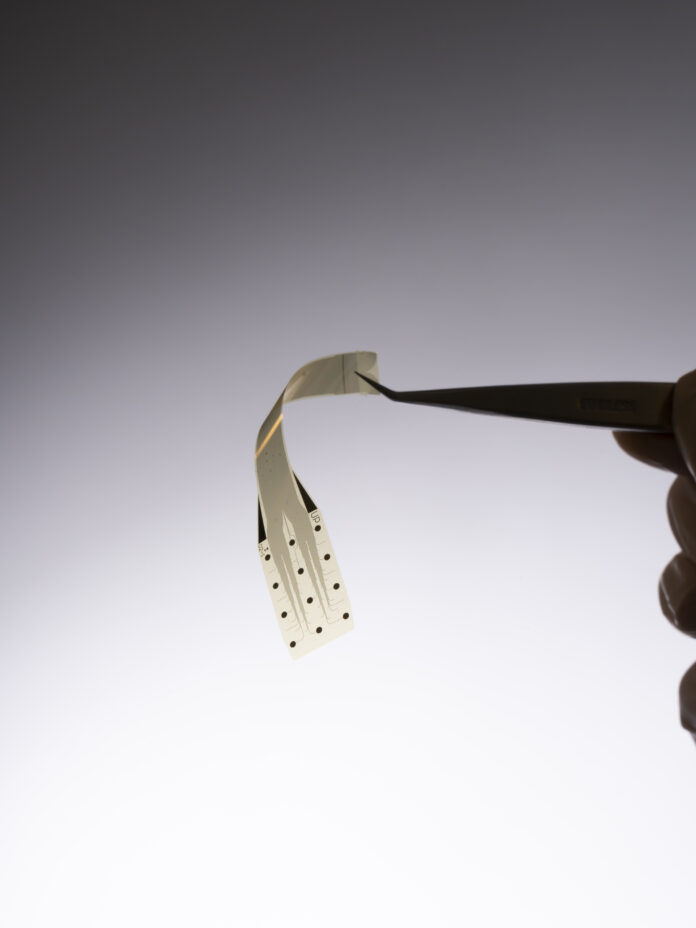BARCELONA, Spain — A cutting-edge brain-computer interface (BCI) developed by INBRAIN Neuroelectronics has shown encouraging early results in the first-in-human clinical trial of its graphene-based technology, the company announced Tuesday.
The study, conducted at the Manchester Centre for Clinical Neurosciences under the sponsorship of the University of Manchester, is evaluating the safety and functional performance of the graphene BCI in patients undergoing brain tumor resection. Interim data from the first four patients enrolled in the trial showed no device-related adverse events, clearing a key safety milestone for the ongoing trial.
Researchers said the device successfully recorded high-resolution neural signals in real time during surgery, even capturing high gamma activity linked to distinct phonemes—basic units of sound in speech—during awake language mapping procedures. These signals were detected using micrometer-scale graphene electrodes, demonstrating the platform’s exceptional spatial and temporal resolution.
“This technology could be transformative, not only for improving surgical outcomes but for unlocking new treatment pathways,” said Mr. David Coope, Chief Investigator and Consultant Neurosurgeon at the Manchester Centre for Clinical Neurosciences and the Geoffrey Jefferson Brain Research Centre. “The ability to detect high-frequency neural activity with micrometer-scale precision opens new possibilities for understanding brain-tumor interactions and broader brain function in neuro-related disorders.”
The ongoing clinical study (NCT06368310) is expected to enroll up to 10 patients to further evaluate the BCI’s safety, signal fidelity, brain stimulation capabilities, and integration into the surgical workflow. The interim analysis was conducted after the initial cohort of four patients to assess performance and ensure patient safety.
Throughout the procedures, the INBRAIN device operated alongside standard clinical monitoring equipment and maintained consistent performance. The company says this level of reliability and signal clarity marks a significant step forward in intraoperative neural monitoring.
“This milestone demonstrates that graphene-based brain-computer interfaces can be deployed in the operating room and deliver a level of neural fidelity not achievable with traditional materials,” said Carolina Aguilar, CEO and Co-Founder of INBRAIN Neuroelectronics. “We’re moving toward a future where neurosurgeons and neurologists can rely on real-time, high-definition brain data to guide personalized interventions.”
INBRAIN’s BCI system utilizes ultra-thin, flexible graphene electrodes designed to conform precisely to the brain’s surface. The device features a dense array of bidirectional contacts for decoding and modulating brain signals, with nanoporous reduced graphene oxide (rGO) layers enhancing both sensitivity and resolution. Preclinical studies showed that the system significantly outperformed conventional platinum electrodes in detecting high-frequency gamma signals (80–130 Hz), which are crucial for functions like speech processing.
The company believes the successful deployment of its graphene interface in the operating room opens the door to a new generation of neurosurgical tools capable of mapping and modulating the brain in unprecedented detail.


